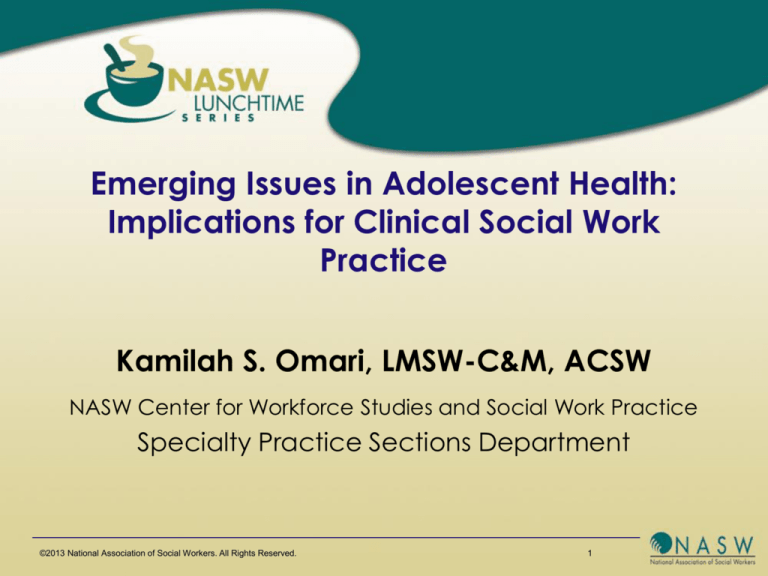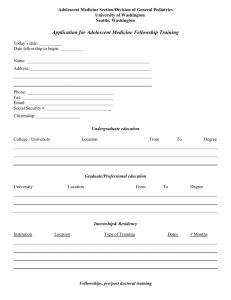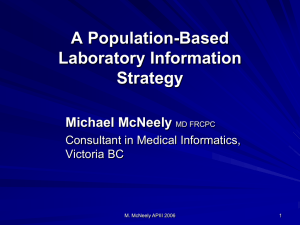
Emerging Issues in Adolescent Health:
Implications for Clinical Social Work
Practice
Kamilah S. Omari, LMSW-C&M, ACSW
NASW Center for Workforce Studies and Social Work Practice
Specialty Practice Sections Department
©2013 National Association of Social Workers. All Rights Reserved.
1
Learning objectives:
• Differentiate aspects of the social context unique to the
current generation of adolescents in the US.
• Identify and define the core assets of positive youth
development.
• Relate emerging adolescent health issues to
adolescent development phases/domains and positive
youth development.
• Identify assessment and clinical social work tools and
interventions useful in addressing adolescent mental
health.
©2013 National Association of Social Workers. All Rights Reserved.
2
Demographics of adolescents in the US
• As of 2010:
– approximately 42.7 million adolescents (ages 1019) currently living in the US.
– Approximately 21.8 million are male and 20.8
million are female.
– White/NH youth represent 58%, Latino youth 20%,
and African American youth 15%.*
Howden,L et. al (2010)
©2013 National Association of Social Workers. All Rights Reserved.
3
Unique Social Context of Today’s Youth
Technology
©2013 National Association of Social Workers. All Rights Reserved.
Diversity
4
Technology
• ‘Digital Natives’ and
‘Digital Immigrants’
• Media Use
• Media Ownership
Diversity
• Cultural Diversity
• Increase in % of
youth with a foreign
born parent
• Increase in % of
youth who don’t
speak English at
home
Prensky (2001), Rideout, et al (2010), Federal Interagency Forum on Child and Family Statistics (2012).
©2013 National Association of Social Workers. All Rights Reserved.
5
Adolescent Development Areas
Physical
Values/
Morals
Spirituality
Cognitive
Sexual
Emotional/
Social
Identity
McNeely and Blanchard (2009)
©2013 National Association of Social Workers. All Rights Reserved.
6
5 C’s of Positive Youth Development
Competence
Confidence
Character
Connection
Caring
Lerner, et. al (2005)
©2013 National Association of Social Workers. All Rights Reserved.
7
Professional Implications
• Cultural competence and contextual
knowledge
• Technological skills and knowledge
• Fostering community connection
• Fostering social justice
• Fostering resilience
NASW (2005)
©2013 National Association of Social Workers. All Rights Reserved.
8
Professional Implications
• Clinical
– Therapeutic contact
– Therapeutic relationships
– Assessment/Diagnosis
– Clinical judgment and clinical wisdom
NASW (2005)
©2013 National Association of Social Workers. All Rights Reserved.
9
Physical Health and Nutrition
•
•
•
•
•
Key features of developmental area
Health Insurance status
Nutrition
Physical activity
Issue: lack of physical activity and chronic
conditions
OAH 2012, CDC 2012b
©2013 National Association of Social Workers. All Rights Reserved.
10
Unintentional Injury/Violence
• Related areas of adolescent development
• Leading causes of death
• Emerging Issues:
– Bullying/Cyberbullying
– Teen Dating Violence/Adolescent
Relationship Abuse
Futures Without Violence (n.d.);McNeely Blanchard 2009, NCCDPHP (2010)
©2013 National Association of Social Workers. All Rights Reserved.
11
Healthy Relationships
• Related areas of
Adolescent
Development:
– Emotional/Social
Development
– Identity
– Morals/Values
• Related Areas of
Positive Youth
Development:
– Connection
– Caring
– Character
McNeely, et. al (2009), Lerner, et. al (2005)
©2013 National Association of Social Workers. All Rights Reserved.
12
Healthy Relationships
Emerging Issues:
• Teen Dating Violence/Adolescent Relationship
Abuse
• Normalizing of risky behaviors
• Digital Abuse
– Cyberbullying
– Sexting and ‘Textual’ harassment
• Commercial sexual exploitation/sex trafficking
Futures Without Violence (2011), The National Campaign to Prevent Teen and Unplanned
Pregnancy (2008), Stewart, et. al (2012)
©2013 National Association of Social Workers. All Rights Reserved.
13
Reproductive Health
• Adolescent development area of focus: Sexuality
• Approximately 750,000 girls/young women (age 1519) become pregnant every year.
• The majority of teen pregnancies result in birth.
• In spite of the decline in rates of teen pregnancy, US
still amongst the highest of developed countries.
McNeely, et. al (2009), Guttmacher Institute (2012)
©2013 National Association of Social Workers. All Rights Reserved.
14
Reproductive Health
Emerging Issues:
• Sexual and reproductive coercion
– Intentional exposure to STIs
– Contraceptive tampering/control
– Threats/acts of violence about
reproductive decision-making
Futures without Violence (n.d.)
©2013 National Association of Social Workers. All Rights Reserved.
15
Substance Abuse
• Key adolescent development area: Cognitive
• Public health issues:
• Usage of non-medical psychotherapeutic
drugs
• Inhalants
• Hallucinogens
• Cocaine
McNeely, et al (2009), Johnston et. al (2012)
©2013 National Association of Social Workers. All Rights Reserved.
16
Substance Abuse
Three most widely used substances are:
alcohol, marijuana, and cigarettes
• 70% have consumed alcohol by the end of
high school; 51% of 12th graders report having
been drunk at least once in their life.
• A decline in teen smoking has occurred.
However, 4 in 10 have tried cigarettes by 12th
grade
©2013 National Association of Social Workers. All Rights Reserved.
17
Mental Health
• Knowledge of adolescent development as a
whole informs clinical social work practice.
• Nearly half of all lifetime diagnosable mental
health problems appear by age 14.
• Untreated mental health concerns can result
in negative consequences.
NASW (2005), Kessler, et.al (2005)
©2013 National Association of Social Workers. All Rights Reserved.
18
Mental Health
According to the Office of Adolescent Health (OAH), as of
2009:
• 26% of high school students acknowledged depressive
symptoms
• 14% of high school students seriously considered
attempting suicide
• 6% of high school students attempted suicide one or
more times
• 4% vomited or took laxatives to lose weight or keep from
gaining weight
OAH(2011b)
©2013 National Association of Social Workers. All Rights Reserved.
19
Mental Health
(Screening and Prevention)
•
•
•
•
Identification and management of emotions
Teaching coping skills
Routine mental health screenings
Knowledge of signs and systems of emotional
disturbance and mental illness
• Flashback to the 5 Cs and their relevance as
protective factors
©2013 National Association of Social Workers. All Rights Reserved.
20
Mental Health
(Assessment and Intervention)
• Assessments:
– Biopsychosocial
– Functioning
• i.e. Child and
Adolescent Functional
Assessment Scale
(CAFAS)
– Issue Specific
• i.e.Trauma Symptom
Checklist for Children
(TSCC)
©2013 National Association of Social Workers. All Rights Reserved.
• Intervention:
– Clinical Judgment and
clinical wisdom
– Establishing therapeutic
contact
– Establishing therapeutic
relationship
– Selecting a treatment
modality
– Issues of application
21
National Policies and Initiatives
• Affordable Care Act
• Healthy People 2020
• National Strategy to End Sexual Abuse and
Exploitation
©2013 National Association of Social Workers. All Rights Reserved.
22
Conclusion
Q&A
Kamilah S. Omari, LMSW-C&M, ACSW
komari@naswdc.org
©2013 National Association of Social Workers. All Rights Reserved.
23







